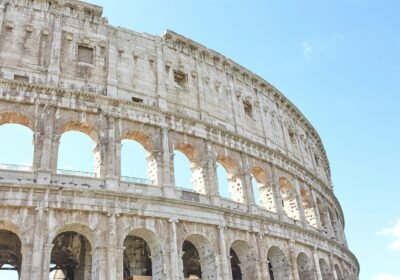The story of (Lord nataraja)
The History of Lord Nataraja
Lord Nataraja, a divine representation of Lord Shiva, is one of the most iconic figures in Hindu mythology. He symbolizes the cosmic cycles of creation and destruction, embodying the rhythm of the universe. The image of Nataraja, often depicted as a dancing figure encircled by flames, encapsulates the dynamic balance between creation, preservation, and dissolution. This narrative explores the origins, symbolism, and significance of Lord Nataraja within Hindu tradition and culture.
Origins of Nataraja
The concept of Nataraja can be traced back to ancient Hindu texts and the evolution of Shiva as a major deity. The earliest references to Shiva can be found in the Vedas, where he is associated with asceticism and meditation. However, it was in the Tamil tradition, particularly through the Shaiva Siddhanta philosophy, that Nataraja emerged as a distinct representation of Shiva.
The earliest visual representations of Nataraja date back to the Chola dynasty (9th to 13th centuries CE) in South India. The Chola kings were patrons of art and culture, and they played a crucial role in the popularization of Nataraja’s image. The bronze sculptures from this period exhibit incredible craftsmanship and artistic expression, often portraying Nataraja in his cosmic dance, known as the Tandava.
The Tandava Dance
The Tandava dance is central to the Nataraja iconography. It is said to represent the five activities of Lord Shiva, known as the Pancha Krityas:
- Srishti (Creation) – The initiation of the universe.
- Sthiti (Preservation) – The maintenance of order and harmony.
- Samhara (Destruction) – The dissolution of the universe.
- Tirobhava (Concealment) – The hiding of the ultimate truth.
- Anugraha (Blessing) – The grace that leads to liberation.
In his dance, Nataraja embodies these five activities, illustrating the cyclical nature of existence. The dance is not merely a physical expression; it symbolizes the interplay of cosmic forces and the eternal rhythm of life.
Iconography of Nataraja
The iconography of Nataraja is rich in symbolism. Typically, Nataraja is depicted with four arms, each carrying specific symbolic items:
- Damaru (drum) – Represents the sound of creation and the rhythm of the universe.
- Agni (fire) – Symbolizes destruction and transformation.
- Abhaya Mudra (gesture of fearlessness) – Indicates protection and assurance to his devotees.
- Pashupati (a snake) – Represents the cycle of life, death, and rebirth.
Nataraja is often shown standing on a dwarf figure, known as Apasmara, who symbolizes ignorance and illusion. This positioning signifies the triumph of knowledge over ignorance, further emphasizing the transformative power of divine consciousness.
The cosmic fire encircling Nataraja signifies the dynamic energy of creation and destruction. It serves as a reminder that the universe is in a constant state of flux, and that balance must be maintained for harmony to prevail.
Philosophical Significance
Nataraja’s dance transcends mere artistic representation; it carries profound philosophical implications. The concept of dance is linked to the idea of lila, or divine play, which illustrates the belief that the universe is a manifestation of the divine’s playful energy. The dance of Nataraja signifies the fluidity of existence and the interconnectedness of all beings.
In Shaivism, Lord Shiva is viewed as the ultimate reality, known as Brahman. Nataraja embodies the dynamic aspect of this reality, representing the ever-changing nature of the universe. This philosophy encourages devotees to embrace the transient nature of life, emphasizing the importance of detachment and understanding the cyclical pattern of existence.
Cultural Impact and Worship
The cultural impact of Nataraja extends beyond religious boundaries. The image of Nataraja has inspired countless artists, musicians, and dancers throughout history. In classical Indian dance forms, especially Bharatanatyam, the representation of Nataraja’s dance serves as a foundational element, symbolizing both physical and spiritual expression.
In addition to its artistic significance, Nataraja holds an important place in worship and ritual. Temples dedicated to Nataraja, particularly in Tamil Nadu, are centers of devotion and cultural activity. The most famous temple is in Chidambaram, where the deity is worshipped through a ceremonial dance performed by priests, symbolizing the cosmic dance of creation.
Global Influence
In modern times, the image of Nataraja has transcended its cultural roots and found resonance in global art and philosophy. The Nataraja statue has been presented as a symbol of harmony between science and spirituality, representing the unification of matter and energy. Notably, a bronze statue of Nataraja was gifted to the United Nations by the Indian government, symbolizing the importance of creativity and dynamism in addressing global challenges.
Nataraja’s representation has also found its way into various artistic forms, from literature to contemporary dance. The fusion of Eastern and Western artistic traditions often incorporates the Nataraja motif, reflecting the universal appeal of its themes.
Contemporary Interpretations
In contemporary discourse, Lord Nataraja continues to inspire discussions around the concepts of balance, transformation, and the interplay between chaos and order. As societies grapple with rapid changes and challenges, the teachings of Nataraja resonate strongly, reminding individuals of the importance of adaptability and resilience.
Various modern thinkers and spiritual leaders have drawn parallels between Nataraja’s dance and the complexities of contemporary life. The dance serves as a metaphor for navigating the uncertainties of existence, encouraging individuals to embrace change while remaining grounded in their values.









